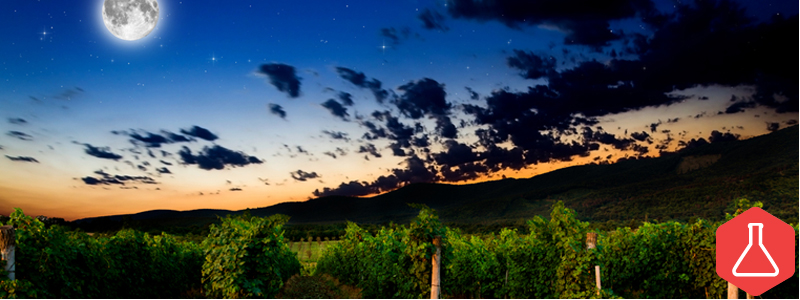Sustainable. Organic. Biodynamic. We have been hearing these words a lot in the wine world over the past decade or so. What started out as an attempt to reduce the amount of man-made materials in the winemaking process has become a huge marketing tool.
Since we know the media will use anything it can to get you to buy a product, at least these products are being touted as somewhat natural. So what do these three comfy marketing . . . I mean . . . viticultural titles mean?
To attempt a complete explanation of each of these terms would result in a lot of snoring and clicking to social media for short spurts of relief from long-winded wine geek talk, so I am going to throwdown in as brief a spell as I can on each term and then tie them all together. In future posts I can get all deep and yawn-y.
Biodynamic viticulture was the first attempt at organic agriculture. Created by Austrian philosopher Rudolph Steiner in the 1920s, each vineyard is seen as its own organism to be maintained in a self-sustaining way. In biodynamics, the earth is seen as a living organism with fluctuating rhythmic cycles in tune with the pull of the moon. All farming is done in tune with these cycles. This is founded on the belief that the moon turns the tides as well as ebbs and flows the minutest levels of sap in a vine. It is within these fluctuations that biodynamic grape growers and winemakers do their agricultural work. Yes, in biodynamics there are also horns and silex (ground quartz) and a process called sexual confusion used for fertilization, but that is for another post. As long as on the surface level you grasp that biodynamics is based on the moon cycles, with farming done in tune with these cycles, you have a better understanding than most people currently encountering the term.
Now on to the nice and tricky landscape of organic. The focus of organic viticulture (grape growing) and viniculture (winemaking) is creating good soil health by prohibiting non-organic certified, or genetically modified fertilizers and pesticides. Simple right? However, once the grapes get into the winery, the international differences in organic practices begin, creating tons of rules and regulations depending on where the grapes are grown. To put it generally, there are two distinctions when buying organic wine: “wine made from organically grown grapes” (the European idea) and “organic wine” (the American idea). The former allows sulfur dioxide (SO2) to be added during the winemaking process. The latter, “organic wine,” requires that no SO2 be added. In the American certification, SO2 can occur naturally in the wine, but the winemaker can’t add additional SO2 during the winemaking process, as the Europeans can. Now we can start to see how the term organic is a slippery slope, as the EU, US and other New World wine regions all use differing levels of the “organic” idea. Oh, and Earth rhythms and moon cycles of the biodynamic peeps are not a focus at all here. Dizzy yet?
Sustainable is the newest and trendiest organic-type movement. It is a movement that adheres to most of the organic ideas, yet allows for controlled chemical sprayings and some synthesized fertilizers and pesticides. The sustainable movement clings to “the principle that we must meet the needs of the present without compromising the ability of future generations to meet their own needs.” Basically this means do whatever you can to grow organically while not allowing the economic success of your vineyard and winery to suffer by using whatever you need to make a profit. And reality sinks in.
Three complex ideas bantered about in wine marketing circles trying to either trick you into buying their product or genuinely wanting you to know how real-deal they are.
All this is to say, if you’re looking for a truly organic wine, it’s hard to navigate these wines simply by what’s printed on the label. My recommendation is to trust your wine merchant, who from talking to the people that originally sold them the wines should know the level of organic practices adhered to by the vineyard. Listen to them and you’ll come out on top.

